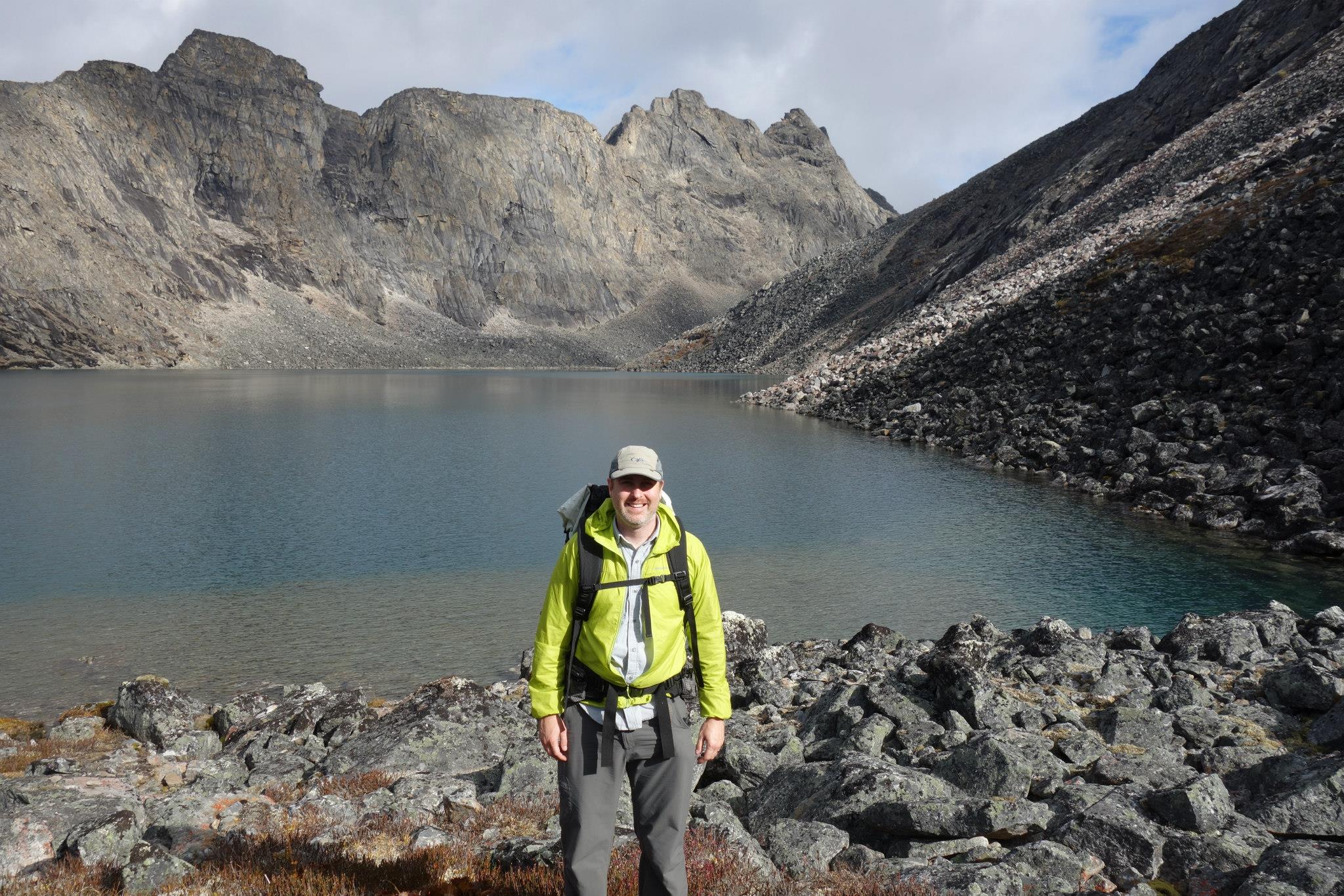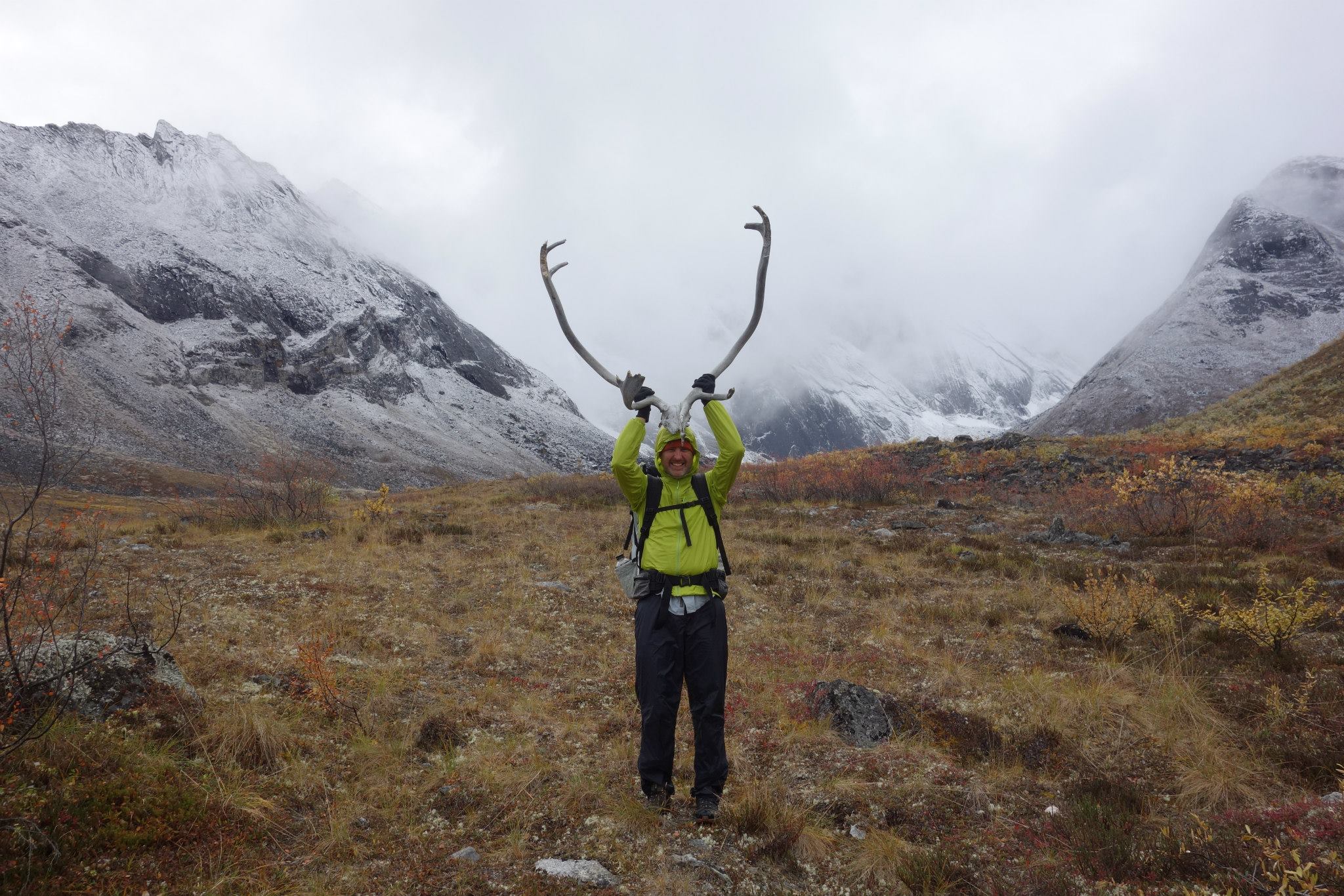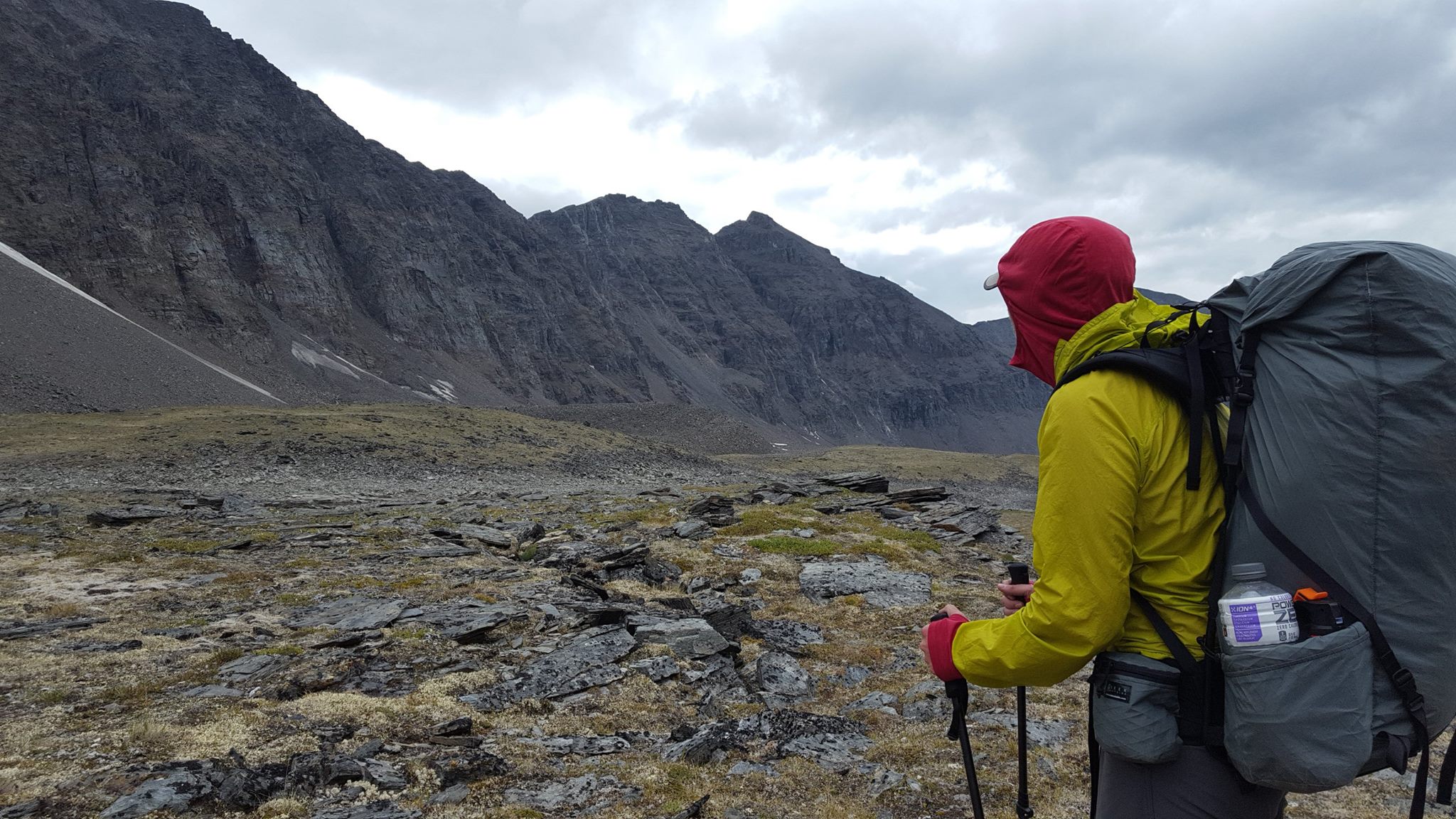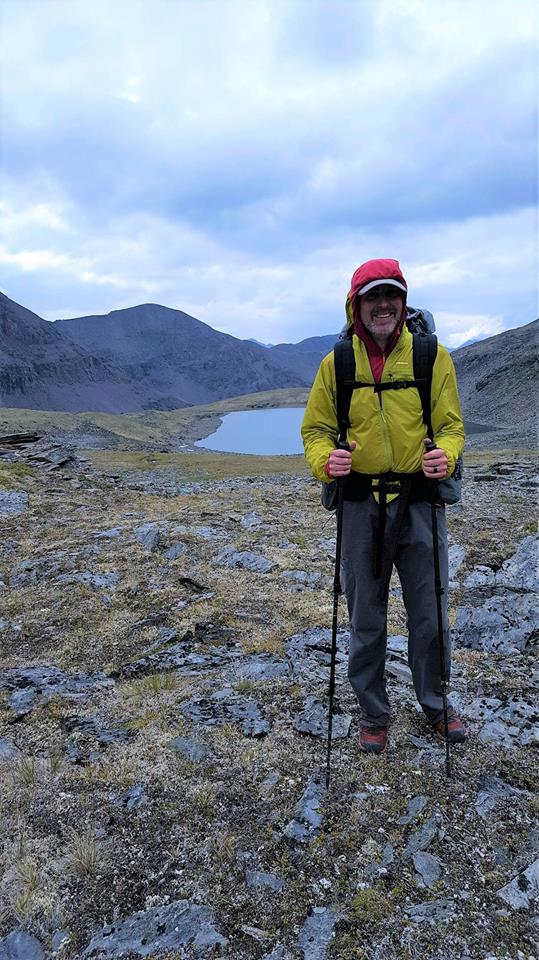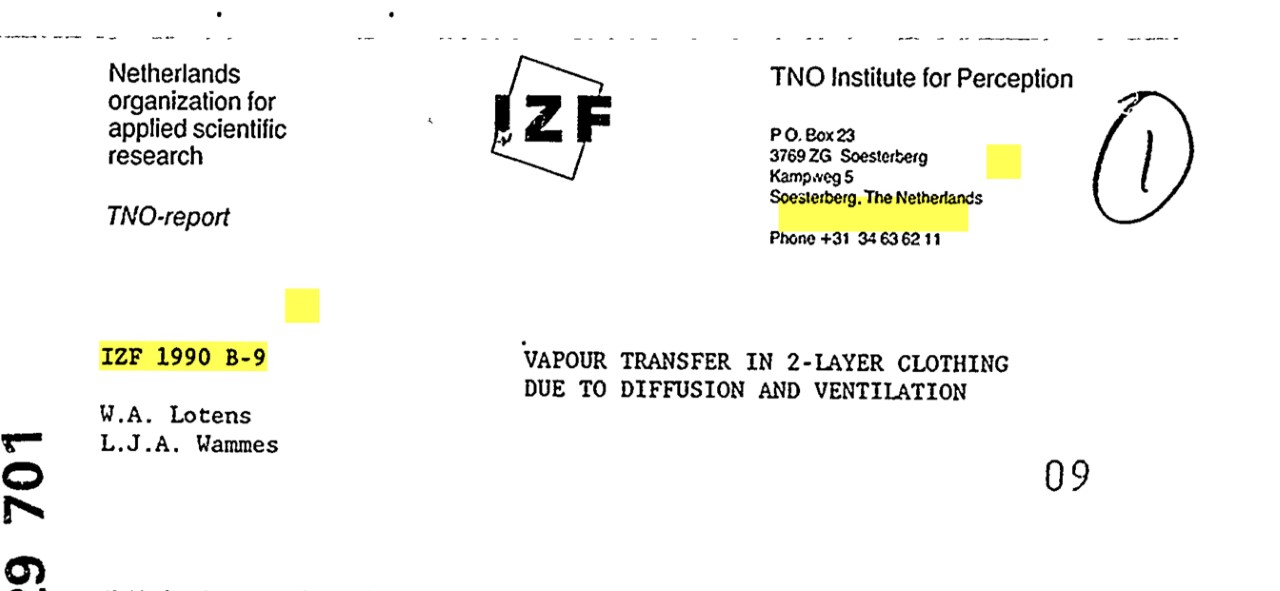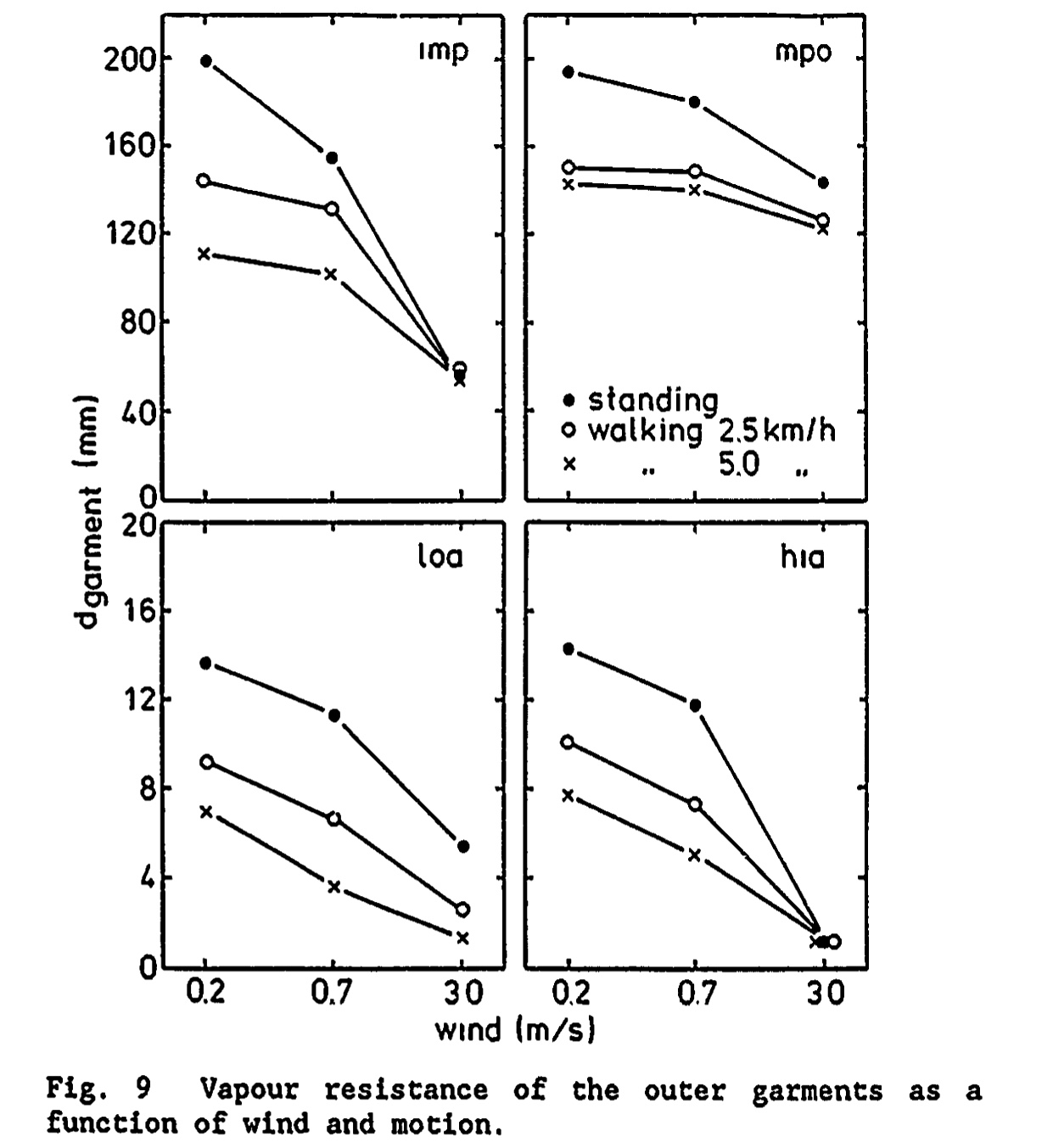Topic
Comparison of Montbell Tachyon and Patagonia Houdini Air Windshirts
Forum Posting
A Membership is required to post in the forums. Login or become a member to post in the member forums!
Home › Forums › Gear Forums › Gear (General) › Comparison of Montbell Tachyon and Patagonia Houdini Air Windshirts
- This topic has 44 replies, 13 voices, and was last updated 5 years, 7 months ago by
 Christoph Blank.
Christoph Blank.
-
AuthorPosts
-
Mar 26, 2019 at 2:41 am #3585502
Here is a quantitative comparison of various characteristics of these two moderate permeability windshirts. I have included some thoughts on permeability as impacted by low rates of travel and high winds that I think should be considered as part of that topic. The Tachyon presents a unique thermal property that is described in detail (perhaps too much detail, but you can judge). I look forward to people’s opinion about the utility of this level of permeability for various activities and conditions.
Mar 26, 2019 at 4:26 am #3585522Very cool! Thank you for sharing your findings.
Mar 26, 2019 at 10:49 am #3585535Very good read and interesting conclusion. Thanks for providing this. It would be nice to see this further IR transmission testing done on other garments. This could certainly pin point the exact product us users would need.
Mar 26, 2019 at 5:20 pm #3585589Stephen,
Thank you for your excellent work!
I agree with most of what you wrote; there is only one exception: MVTR tests, such as the ASTM E96, or your custom test, give an indication of MVTR for static use only. For active use, these moderately porous fabrics will exhibit an average of around a 300% increase in the MVTR values you indicate. You can modify your custom MVTR tester to add air to the water and clearly see this difference yourself. Any WPB membrane and your windshirts will read similarly using your existing MVTR tester but dramatically different with it modified to add air; This emulates the pumping motion caused by your body movement.
I have measured windshirt LWIR transmission through various fabrics. Military rainwear and windshirts routinely haveLWIR block coatings applied. This coating is primarily intended to make soldiers outer clothing much less visible to IR night vision weapons. Secondarily it will increase the insulation value as you observed. Most news worthy to me is that Patagonia is now apparently using it on commercial garments or the fabric finish of the Patagonia Air has lower emissivity than nylon or polyester. Previously it was outlawed for this market.
Mar 26, 2019 at 5:55 pm #3585595This coating is primarily intended to make soldiers outer clothing much less visible to IR night vision weapons. Secondarily it will increase the insulation value as you observed. Most news worthy to me is that Patagonia is now apparently using it on commercial garments. Previously it was outlawed for this market.
What would be the purpose for applying this coating to a commercial garment?
Mar 26, 2019 at 6:05 pm #3585597Brad,
The LWIR reduction coating makes the garment warmer without adding detectable weight. It does this by lowering the emisivity of the outer fabric. Lower emissivity means a lower loss from thermal radiation. Radiation, convection, and conduction are the three types of heat loss.
Mar 26, 2019 at 6:41 pm #3585602Hi Richard:
Thank you for the kind words. I have voraciously consumed your work for years and appreciate all you have done. I can easily incorporate both internal and external air movement into this test to try to gauge the importance of pumping or low level breezes on moisture management and will take a look at this. However, to me, the critical question will be whether even with “pumping” can the comfort range of the “moderate” permeability windshirt be significantly extended beyond what is provided by a very low permeability windshirt.
I would very much like to examine any LWIR blocking technologies. I presume you are referring to an exterior low emissivity coating. None of the claimed “low emissivity” commercial solutions that I have examined have contributed much in terms of thermal performance. If you can suggest any obtainable garments that I can examine, I would appreciate it. If so, I will measure emissivity and quantify the impact on thermal resistance. I did a write up of the Columbia solution here: https://backpackinglight.com/…/evaluation-of-<b>omni</b>-<b>heat</b>-performance/
Mar 26, 2019 at 6:46 pm #3585604I see the link at the end does not work. How about this?
https://backpackinglight.com/forums/topic/evaluation-of-omni-heat-performance/
Mar 26, 2019 at 6:49 pm #3585605Interesting…..Would it also make you overheat sooner, like wearing a black windshirt in the sun vs a light color?
I assume this could also be used for insulating layers
Mar 26, 2019 at 7:02 pm #3585608Hi Brad:
It all depends. If you can successfully reduce emissivity, the exterior garment face temperature will rise, so convective loss will increase. However, this coating could lead to overheating, in principle, or it could lead to increased comfort in really cold temperatures. It has to be difficult to maintain the emissivity of the exterior coating. If it gets wet, the emissivity will rise. If it gets dirty, the emissity will rise. Low emissivity materials are often metallic. If you apply such a coating to a fabric, how will it impact breathability? Also, the low emissivity coating will be reflective of adjacent heat. This means that if the otherwise thermally camouflaged soldier walks past a heat source, he can be seen by the enemy who is using his thermal night vision equipment. Not a simple problem to solve, at least not for me.
Concerning your point about insulating layers: If you have a low emissivity coating in contact with other clothing layers, it would do generally nothing. Radiant transfer occurs through the air or a vacuum. In this case, the radiant barrier is in direct contact with another material, so the heat transfer mechanism will be conduction.
Mar 26, 2019 at 8:19 pm #3585617Outstanding report! I am fascinated by this subject as it seems to be very difficult to make a garment that is good at blocking wind, allowing the bodies moisture to escape and to not overheat the user quickly during strenuous activities. The term ‘breathable’ is used so frequently in marketing, it’s worthless without real measurements that we are finally starting to see.
Mar 28, 2019 at 12:16 am #3585838Hi Brad:
I am working on a response to the points you raise, in combination with some test suggestions from Richard Nisley. However, I would like to know from you and others who use windshirts and suggested similar concerns, why you don’t simply remove the windshirt when your activity level exceeds the capability of the windshirt. The Montbell windshirt may provide a partial solution for a range of activity/ambient conditions, however, I expect any windshirt designed to some level of convective cooling, will eventually prove inadequate as the activity level continues to increase or the environment provides less cooling. So, please explain the circumstances of your windshirt use and under what conditions it does not meet your expectations.
Mar 28, 2019 at 1:06 am #3585847To be honest I probably don’t stop and take it off. I sweat a lot and can overheat climbing. I use it backpacking in the summer out west and I also use it running in the winter in the Southeast and obviously don’t want to stop to take it off. I used a Montane Aero (Pertex Quantum) from ~2008-2012 and have used a 2011 Patagonia Houdini since. Here are some pictures of them in use in WRR, New Mexico, Alaska, and the Sierra:





 Mar 28, 2019 at 9:49 pm #3585977
Mar 28, 2019 at 9:49 pm #3585977Stephen,
You said in part, “I can easily incorporate both internal and external air movement into this test to try to gauge the importance of pumping or low level breezes on moisture management and will take a look at this. However, to me, the critical question will be whether even with “pumping” can the comfort range of the “moderate” permeability windshirt be significantly extended beyond what is provided by a very low permeability windshirt.”
My secondary research on this subject has been based on measuring the air permeability of garments and then using them in the field for an extended period of time. For approximately the last 10 years, I have posted to this forum my findings that the optimal level occurs at around the 35 CFM in actual field use. The best primary research on this topic, I have found, is in a copyrighted research report. You will have to buy a copy to read it for your personal use only.

My research as does theirs, seems to refute your hypothesis above. Walking provides up to a 400% decrease in their test windshirt moisture resistance versus a static test. As I mentioned in a prior post, just introducing air into your water bath with a static test will show an approximate 300% reduction in moisture resistance. Also there is a significant difference in moisture transport resistance from small pores to medium pores.

The Y scale axis values from 200 to 0 apply to only the mpo (first) chart. The Y scale axis values 20 to 0 apply to the mpo, loa, and hia (remaining three) charts.
The Y axis is vapor resistance in still air equivalent distance. The four graphs are for different classes of outerwear: imp = impermeable (exp is silnylon @ 0 CFM); mpo = micro porous (exp is Entrant @ .025 CFM); loa is low air permeability (exp is Arcteryx Squamish @ 42.5 CFM); and hia = high air permeability (exp is a plain weave summer shirt @ 147.5 CFM).
20 years ago, the researchers knew their was an optimal knee at around 42.5 CFM. The most recent study was conducted by Patagonia and US Special Forces and they found the knee at 35 CFM. If you look at my old forum posts from around 10 years ago, I also found it at around 35 CFM.
Mar 28, 2019 at 11:13 pm #3585991Hi Richard:
Great information. I have run one round of tests with air circulation beneath the garment. I am now running another with an 8mph breeze on the garments and a circulation fan beneath one garment (I only have one tiny fan at the moment). Today’s test will finish at 7PM. What is pretty interesting is that I can measure the impact of internal circulation and the added breeze on internal relative humidity beneath the garment.
I would not call my statement above a hypothesis. I would call it a question. I don’t quite follow the graphs that you provided (Are there three lines on each graph because the test was run three times?), but I certainly accept that as you blow air through a fabric, the effective resistance to vapor transfer will decrease. However, I am talking about comfort, not moisture resistance. To me comfort will involve removing moisture fast enough so it does not accumulate in base or intermediate layers. It is not yet clear to me how well windshirts in their various configurations can do this as activity levels and ambient conditions vary.
Two more hours to go and I will have another piece of data.
Mar 29, 2019 at 1:41 am #3586025Stephen,
The description of the three lines is in the top right graph (2nd of 4). The first line is just standing, the second line is walking at 2.5 km/hr, and the third line is walking at 5.0 km/hr.
Mar 29, 2019 at 5:58 pm #3586103Hi Richard:
I found the abstract for the study and also found a similar study by the Lotens et al. which I read. Would it be too much trouble to send me the description of the clothing ensemble used for the study you mentioned. I am curious about the garments that were tested. Thank you.
Mar 29, 2019 at 6:24 pm #3586111The same light base layer was used for all tests. It had a vapor resistance equivalent to 5mm of still air.
The outer garments were cut on a classic rain gear pattern. There was a separate top and bottom with Velcro closures over the zipper openings. The specific material was not mentioned for each case but the material’s air permeability was. I also provided that information in an earlier post.
Six subjects tested each ensemble in a climate chamber while on a treadmill. The mechanism used to measure the ensembles vapor resistance was more sophisticated than what you are doing. They used Argon gas in a lattice under the clothing in combination with a mass spectrometer.
What your revised tester is doing is similar to a demonstration that the EPIC manufacturer used to show that a static MVTR test was not a viable indicator of windshirt field performance.
Mar 30, 2019 at 1:27 am #3586187Great research, Stephen.
You don’t mention the year of the two windshirts. The Houdini Air I assume to be 2019, because I believe it’s new on the market. What about the Tachyon? I understand that it may have changed significantly in 2018, to closer to 20 CFM, vs ~10 CFM for the earlier version. Your numbers suggest yours may be a pre-2018 version?
Mar 31, 2019 at 8:22 pm #3586389Hi Gumbo: Thank you. The Houdini Air is 2019 and the Tachyon is the current version that I picked up at the local Montbell store. I understand the fabric changed significantly from the prior version. As the paper states, I measured 10.5 CFM. I think if you look around on this site, you can find a test on the older Montbell fabric.
Hi Richard: Regarding the study: I am curious why IMP and MPO perform so differently. I was wondering if the garments had different zipper or aperture features so that the IMP might permit greater leakage than MPO. It is just curious to me that the IMP showed greater leakage/internal air circulation than the MPO. Regarding the breathability test. I have been reading about the issues you have been raising. Initially, when I came up with this test method, I felt that the static test was more indicative of the inherent capabilities of the fabric. I was aware that some of the standard test methods incorporate a 1 m/s air flow, but felt that would unduly influence the results. My thinking may not have been right on this. I am now doing tests of static vs internal air flow vs internal and external air flow. Unfortunately, these tests are time consuming but at the end, I should have a better idea of what may better represent the reality we experience when we wear these garments. I am pretty sure the static test is not it.
By the way, I just completed version 1.0 of a HH tester. It is a modified version of lancem’s version 2.0 design. It is fine for low permeability fabrics like Gore-tex or Neoshell. Not so good for more permeable fabrics. I hope to get this resolved over the next few days so I can get reasonable wind shirt numbers. However, using the pressure cuff bulb, all I succeed in doing with the Houdini Air is puff up the fabric each time I press the bulb. The standard Houdini works, more or less in the tester but it is difficult to control the ramp up of pressure. This requires modulation of the speed and depth of pumping. I have a couple of ideas to make this more controllable. If I succeed, I will write up the results. You get what you pay for with test instruments! There is no Testex in my budget.
Mar 31, 2019 at 10:13 pm #3586405Stephen,
Many thanks for sharing your work!
HH and air permeability data on windshirts is always gratefully received here.
Apr 1, 2019 at 5:30 pm #3586535Stephen,
You said, “Hi Richard: Regarding the study: I am curious why IMP and MPO perform so differently.“
In the Fig 9 graphs I posted, earlier in this thread, the large Y scale numbers apply to only the first chart. The small Y scale numbers apply to the other 3 charts.
Apr 1, 2019 at 10:58 pm #3586583Hi Richard: I went back and reread that post and saw that you wrote that right under the 4 plots. Thank you for clarifying.
Apr 1, 2019 at 11:19 pm #3586591New HH tester: I replaced the bulb with a vacuum cleaner. This shop vac can produce negative or positive pressure, in this case positive is used. I feed the air through a Dwyer variable flow meter. I don’t care about the flow rate, however the meter valve provides very good, but not perfect regulation of the air flow into the tester. I can ramp the pressure up pretty slowly. I did tests of the Houdini Air and Houdini 2018. Neither of these are new, so some degradation may have occurred from new condition. I tested 5 locations on each. Average for Houdini Air is 159. I have not seen anyone else’s test for the Air, so I have nothing to compare with. Average for Houdini is 308. Richard got 387 in one posting that I saw. The garments behave very differently. Once the Air starts to fail, the bubbles grown in size and number rapidly. The standard Houdini produces a few small bubbles that do not grow rapidly until head increases significantly. As lancem pointed out previously, calling the failure point seems to involve some judgement which probably becomes better with experience. The standard calls for 3 bubbles and end. That is probably pretty good for the Air. Not clear if that is the best cut off for the Houdini. I may get a two foot tall clear tube and verify this the old fashioned way to get a better handle on accuracy. A tube of that height should do windshirts and provide better control, all at very little cost. Any comments will be appreciated.
Apr 1, 2019 at 11:40 pm #3586593Great progress!.. my Houdini test was on a new (never worn) windshirt. We should expect it’s HH value to be slightly higher than a used one.
The HH standard calls for the average HH where at least three penetrating water droplets are growing… there is a judgement variance. It is common to see small manufacturing HH variance between two or more new garments of the same type. Also the HH will generally increase after each wash/dry cycle. So close HH readings can be realistically interpreted as equivalent.
A key determinant of windshirt fabric quality is the combination of the air permeability and the hydrostatic head. Two fabrics with the same CFM can have very different HH values. The one with the higher HH is the best quality fabric and indicates precisely woven uniform pore sizes. The lower HH fabric is not precisely woven and has irregular pore sizes; water droplets will move through the largest pores first.
-
AuthorPosts
- You must be logged in to reply to this topic.
Forum Posting
A Membership is required to post in the forums. Login or become a member to post in the member forums!
Our Community Posts are Moderated
Backpacking Light community posts are moderated and here to foster helpful and positive discussions about lightweight backpacking. Please be mindful of our values and boundaries and review our Community Guidelines prior to posting.
Get the Newsletter
Gear Research & Discovery Tools
- Browse our curated Gear Shop
- See the latest Gear Deals and Sales
- Our Recommendations
- Search for Gear on Sale with the Gear Finder
- Used Gear Swap
- Member Gear Reviews and BPL Gear Review Articles
- Browse by Gear Type or Brand.


